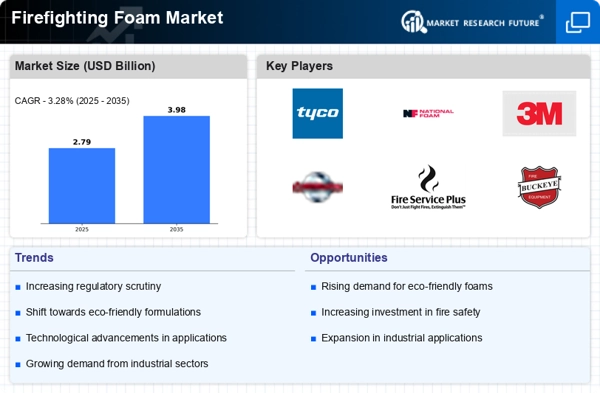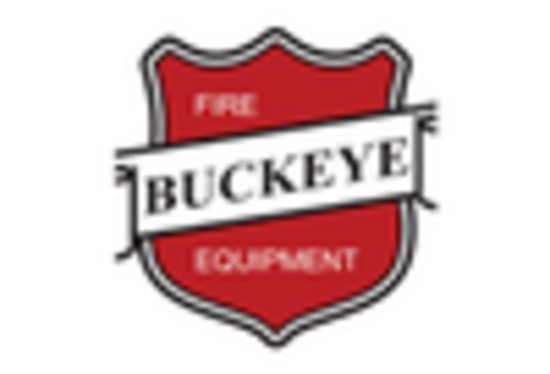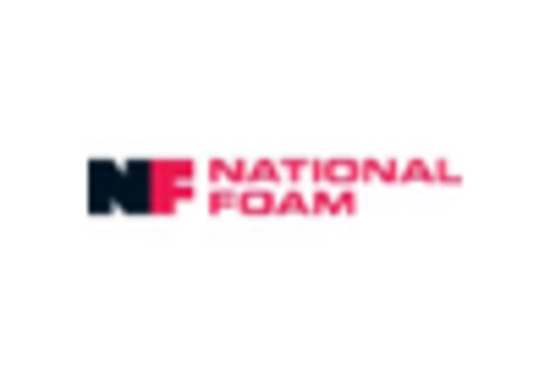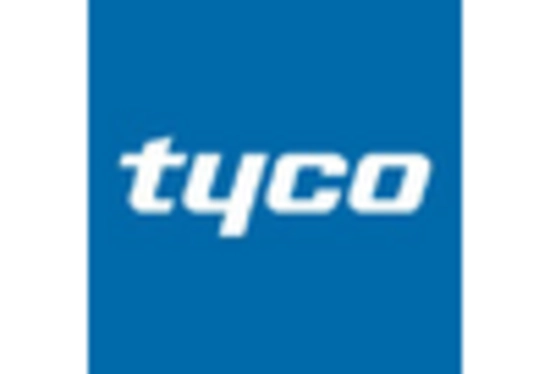Growth in the Aviation Sector
The expansion of the aviation sector is emerging as a crucial driver for the Firefighting Foam Market. With the increase in air travel and the establishment of new airports, the need for effective firefighting measures in aviation has become paramount. Aviation fire safety regulations require the use of specialized firefighting foams that can effectively combat fuel fires, which are prevalent in aircraft incidents. The International Civil Aviation Organization (ICAO) mandates that airports maintain adequate firefighting capabilities, further propelling the demand for advanced foam solutions. As the aviation industry continues to grow, the Firefighting Foam Market is likely to experience a corresponding increase in demand for aviation-grade firefighting foams, ensuring the safety of passengers and aircraft.
Increasing Incidence of Fire Hazards
The rising incidence of fire hazards across various sectors appears to be a primary driver for the Firefighting Foam Market. As urbanization accelerates, the frequency of industrial and residential fires has surged, necessitating effective firefighting solutions. Reports indicate that the number of fire incidents has increased by approximately 10% over the past five years, prompting a greater demand for advanced firefighting foams. This trend is particularly evident in regions with high industrial activity, where the risk of chemical fires is pronounced. Consequently, fire departments and industries are increasingly investing in firefighting foam technologies to enhance their response capabilities. The need for reliable and efficient firefighting solutions is likely to continue driving growth in the Firefighting Foam Market.
Rising Awareness of Environmental Impact
There is a growing awareness of the environmental impact associated with traditional firefighting foams, which is influencing the Firefighting Foam Market. As concerns regarding the ecological effects of per- and polyfluoroalkyl substances (PFAS) gain traction, many organizations are seeking alternatives that are less harmful to the environment. This shift towards eco-friendly formulations is prompting manufacturers to innovate and develop sustainable firefighting foam products. The market for fluorine-free foams is projected to expand significantly, as industries and municipalities prioritize environmental responsibility. This trend not only addresses regulatory pressures but also aligns with the broader movement towards sustainability, thereby driving growth in the Firefighting Foam Market.
Regulatory Compliance and Safety Standards
Stringent regulatory compliance and safety standards are significantly influencing the Firefighting Foam Market. Governments and regulatory bodies have established rigorous guidelines to ensure the safety of firefighting operations, particularly in high-risk environments such as oil and gas facilities. Compliance with these regulations often necessitates the use of specialized firefighting foams that meet specific performance criteria. For instance, the introduction of regulations mandating the use of fluorine-free foams has spurred innovation within the industry. As organizations strive to adhere to these standards, the demand for compliant firefighting foam products is expected to rise. This regulatory landscape is likely to shape the future of the Firefighting Foam Market, driving manufacturers to develop innovative solutions that align with safety requirements.
Technological Innovations in Foam Formulation
Technological innovations in foam formulation are playing a pivotal role in shaping the Firefighting Foam Market. Advances in chemical engineering have led to the development of more effective and efficient firefighting foams that can extinguish fires more rapidly and with less environmental impact. Innovations such as the incorporation of biodegradable materials and enhanced foam stability are becoming increasingly prevalent. These advancements not only improve firefighting performance but also address the growing demand for sustainable solutions. As technology continues to evolve, the Firefighting Foam Market is likely to witness a surge in the adoption of these innovative products, enhancing firefighting capabilities across various sectors.


















Leave a Comment